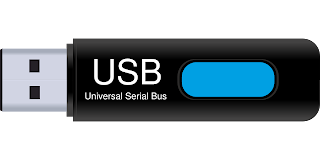How to Install Multiple Bootable Operating Systems on a USB Stick
How to Install Multiple Bootable Operating Systems on a USB Stick
Creating a USB stick with multiple bootable operating systems can be a useful tool for various purposes, such as troubleshooting, testing, or just having different operating systems on the go. Here's a general guide on how to achieve this:
Note: Before you begin, make sure to back up any important data on the USB stick, as the process may involve formatting.
Requirements:
USB Stick:
- Ensure it has enough space for all the operating systems you want to install.
Software:
- Rufus (for Windows) or balenaEtcher (for Windows, macOS, and Linux)
- ISO files for each operating system you want to install
Steps:
Download Required Software:
- Download and install Rufus or balenaEtcher.
Format USB Stick:
- Insert the USB stick into your computer.
- Open Rufus or balenaEtcher.
- Select your USB stick.
- Format the USB stick (Note: This will erase all data on the USB).
Create Bootable USB for Each OS:
- Download the ISO files for the operating systems you want to install.
- Use Rufus or balenaEtcher to create a bootable USB for each operating system. This will involve selecting the ISO file for each OS and creating the bootable drive.
Partition the USB:
- After creating the bootable USB for each OS, you need to partition the USB drive.
- Use a partitioning tool like GParted, Disk Management (Windows), or Disk Utility (macOS) to create separate partitions for each operating system.
Install Each OS on a Separate Partition:
- Boot from the USB stick.
- During the installation process for each OS, select the respective partition you created for that OS.
- Complete the installation for each operating system.
Install a Boot Manager:
- Use a boot manager like GRUB to manage the boot process.
- Install GRUB on the USB stick, and configure it to recognize each operating system's partition.
Configure Boot Order:
- Access the BIOS or UEFI settings of the computer.
- Set the USB stick as the first boot device.
Testing:
- Restart your computer and test the USB stick to ensure that the boot manager allows you to choose between the different operating systems.
Notes:
- Keep in mind that some operating systems may not play well together due to differences in boot loaders and configurations.
- Ensure that your computer supports booting from a USB stick.
- The specific steps may vary slightly depending on the operating systems you choose and the tools you use.
Always refer to the documentation for the specific operating systems and tools you are using for any additional details or variations in the process.

